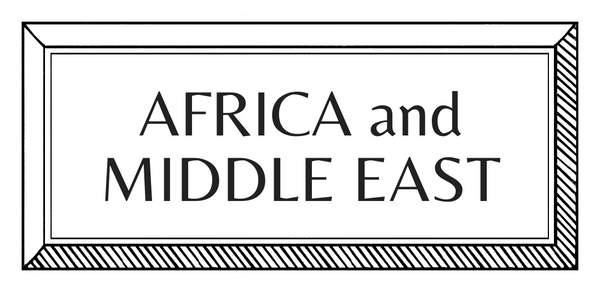CRAFT STORIES | ASIA & PACIFIC | CAUCASUS | WEAVING
The History of Weaving in the Caucasus
 Spinning wool in Kosalar © reWoven
Spinning wool in Kosalar © reWoven
Jewel-tone dyes, glossy mountain wool and endlessly varying designs make south Caucasian rugs some of the most highly coveted and widely collected weavings. Despite the region’s small size – modern-day Armenia, Azerbaijan and Georgia – it has one of the richest and most diverse weaving traditions in the world.
The south Caucasus – modern-day Armenia, Azerbaijan and Georgia – lie to the north of the border shared between Anatolia and Iran. Their weavings reflect the historical influence of the Ottoman and Persian empires, synthesised with local traditions using fabulous wool and dyes. Many kilims, flatweaves and silk embroideries are woven across the Caucasus, from mountainous Dagestan far to the north to the arid southern border between Azerbaijan and Iran, but it is the pile rugs woven from lustrous sheep wool which are best known.
It is an ancient tradition, with archaeological evidence dating woven wool in the Caucasus to the 4th millennium B.C., and dyed flax fibres to a prehistoric date of circa 34,000 B.C. The story of surviving rugs begins later, in the 17th century, with a dramatic group called the ‘Dragon’ carpets. These sophisticated weavings, woven in the Southern Caucasus, owe much to the designs preferred by the Persian court.
Locked into a lattice, the fluid lines and intricate details of Safavid weaving become stylised and abstracted. Spotted leopards entangled in combat with dragons, lotus palmettes and curling cloud bands evoke the Chinese influence on Persian iconography.

Vibrant yarns in the Caucasus © Ryan Carter.
Swathes of the region were subjected to rule by a succession of empires; Ottoman, Persian and from the beginning of the 19th century, Russian. In 1885 a Russian imperial initiative established the Kustar Committee to oversee and develop artisanal crafts in rural areas.
Ateliers were set up in the south Caucasus to organise the novel and exotic weaving tradition of the south Caucasus. A Latvian member of this committee, Julius Straume, enthusiastically dedicated himself to copying rugs and textiles in watercolour, creating point papers that would then be redistributed amongst weavers, both preserving and forever clouding the history of these designs.
The villages of the south Caucasus were often home to a highly diverse population, which is reflected in their weavings. Muslim prayer rugs sometimes have Armenian inscriptions, while Turkic designs like the classic Memling gül were woven with dyes made by Armenian artisans and merchants. As well as being offered for sale or furnishing, rugs were also woven for prayer and as wedding gifts or dowries.
One of the great beauties of Caucasian rugs is the way in which the designs are adapted and reimagined. The sheer number of weaving centres in the 19th century are reflected in the place-specific names given to rug types; Kuba, Shirvan, Ganja and Karabagh, and many others. Then, as now, they were valued for their colors; among them coral pink, warm light greens from pea to turquoise, and aubergine purple.
Professional dye makers and local women drew on a rich knowledge of how to make these dyes from flowers, roots and plants. Another key feature of Caucasian rugs are their wonderful multiple borders, separated by a red and white ‘barber pole’. Sometimes they take up almost the whole rug, as important as the central field design.

Mehriban Safarova works on a new rug © reWoven
Rugs which use finer wool and a higher number of knots have delicate designs which can densely fill the entire field. When the wool is softer and coarser, the designs become bolder and more simplified, characteristic of a type known as Borchalo (or Bordjalou) rugs.
Sometimes referred to generally as ‘Kazak rugs’, they come from a cluster of weaving villages in the very centre of the Caucasus, where the borders between Armenia, Azerbaijan and Georgia meet. Woven with glossy mountain wool from sheep grazed on the surrounding mountainous plateaus, they have a bright palette using a few vivid colours. Ram’s horns, güls, and other Turkic tribal motifs combine with flowers and small animals, creating an aesthetic repertoire all of their own.
This tradition continues in the part of the historical Borchalo region that falls within Kvemo Kartli in modern-day Georgia. In two villages which have been home to an ethnic Azerbaijani minority for centuries, a small number of women take pride in their generational knowledge of weaving.
reWoven, a non-profit organisation, has worked in the region for almost 10 years to keep the tradition alive and support their communities by weaving new versions of the most beautiful 19th century designs with naturally dyed colors. Working in their homes, weaving remains a part of daily village life, and the new rugs share the spirit of the tradition in which they follow.

Azeri shepherds with their flocks in southern Georgia © Ryan Carter
Images from reWoven, Ryan Carter, Rippon Boswell and the Philadelphia Museum
Discover more | www.rewoven.net | Instagram: @rewovenrugs









































